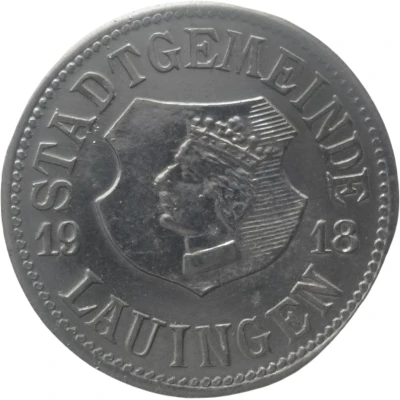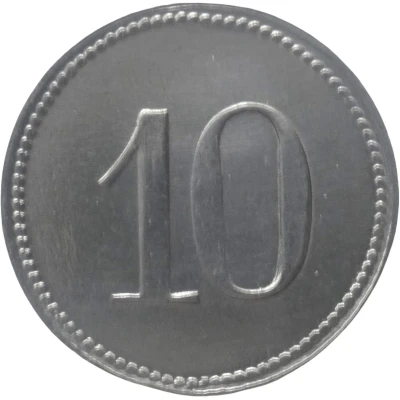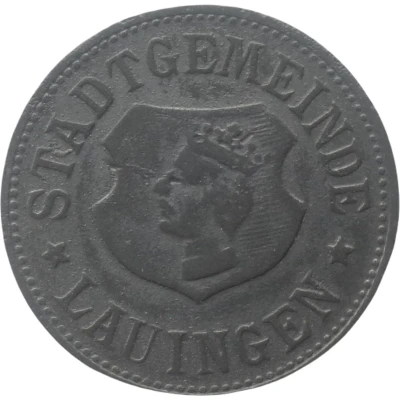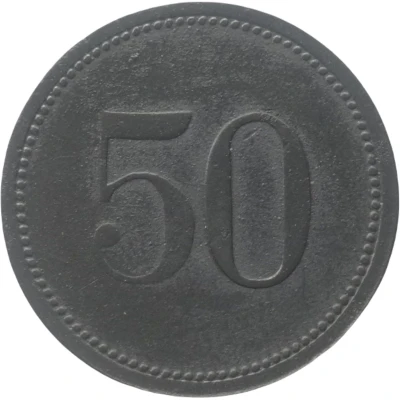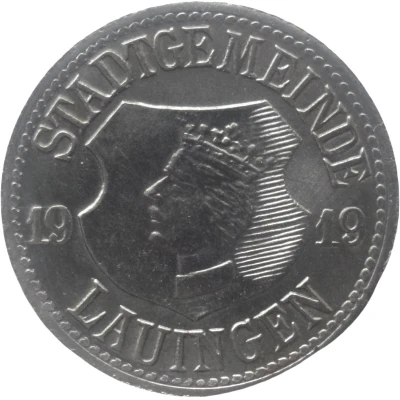
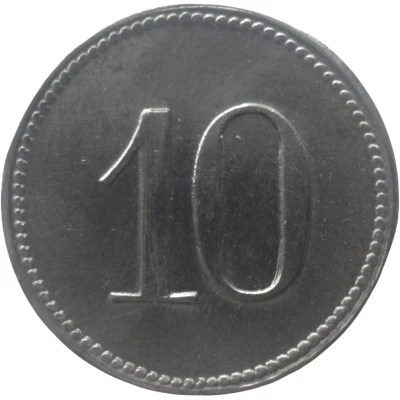

© Willem63 (CC BY-NC-SA)
10 Pfennigs - Lauingen
1919 year| Iron | 2.5 g | 20.0 mm |
| Issuer | City of Lauingen (notgeld) (Federal state of Bavaria) |
|---|---|
| Period | Weimar Republic (1918-1933) |
| Type | Standard circulation coin |
| Year | 1919 |
| Value | 10 Pfennigs (10 Pfennige) (0.10) |
| Currency | Mark (1914-1924) |
| Composition | Iron |
| Weight | 2.5 g |
| Diameter | 20.0 mm |
| Thickness | 1.2 mm |
| Shape | Round |
| Technique | Milled |
| Orientation | Medal alignment ↑↑ |
| Demonetized | Yes |
| Updated | 2024-10-04 |
| Numista | N#344638 |
|---|---|
| Rarity index | 90% |
Reverse
Pearled rim with denomination centered
Script: Latin
Lettering: 10
Edge
Plain
Interesting fact
The 10 Pfennigs - Lauingen 1919 coin from the City of Lauingen (notgeld) in the Federal state of Bavaria, made of Iron and weighing 2.5g, is interesting because it was issued during a time of economic crisis in Germany, specifically during the hyperinflation period of the 1920s. The coin was used as a substitute for the official German currency, the Mark, which had become nearly worthless due to inflation. The use of iron as the material for the coin was also unique, as most coins were made of more valuable metals like gold, silver, or copper. This coin is a reminder of the economic challenges faced by Germany in the early 20th century and the creative solutions that were implemented to address them.
